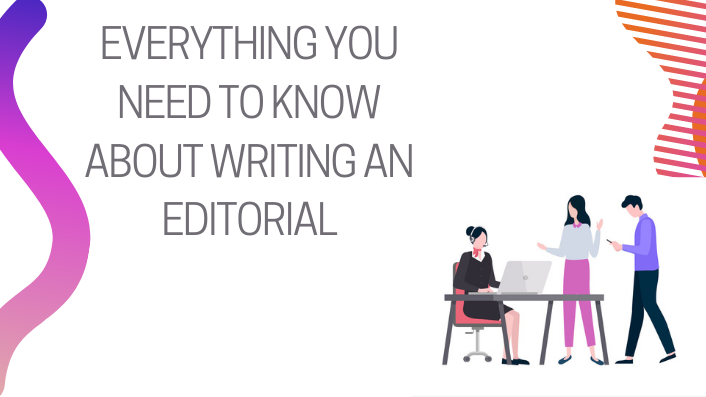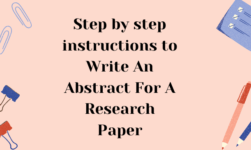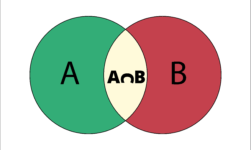
Writing an editorial is an excellent way to communicate an opinion or advocate for a purpose to a large audience. Powerful editorial papers may increase public understanding of a problem while also changing other people’s views on the subject. Understanding how to write an effective editorial will help you get your point across, ignite debate in your group, or take a stand on behalf of a group. We are going to discuss all the relevant information regarding editorial but before that let us know what exactly is editorial and get dissertation assignment help.
What is Editorial?
An editorial is a concise piece of writing that expresses one person’s viewpoint on a major event or social topic. A good editorial’s purpose is to inspire the reader to think about your point of view and change their mind. Editorials also address contentious topics from opposing perspectives.
Teachers give editorials in class to assess your concise writing skills, and journalists and editors at magazines and newspapers publish editorials to illustrate a point or generate conversation about their articles. Your editorial should make a strong case that represents your viewpoint and appeals to your target audience.
Types of Editorial
While all editorials aim to share a view and persuade the readers, there are differences in editorial form. The various forms are classified into four groups based on the article’s goal:
- Interpretive: An interpretive editorial illustrates and describes a particular incident or topic. This form of editorial encourages people to think about a subject and explore how the audience can benefit from it.
- Critical: The critical format examines the different factors of an issue before proposing a solution. You may, for example, criticize a regulation that is relevant to your problem to push for a particular reform.
- Persuasive: This style of editorial addresses the reader personally and urges them to respond. The persuasion format emphasizes the audience’s power to affect progress by taking the suggestions.
- Praising: A praising editorial expresses gratitude for an individual or institution’s contribution to a cause.
Knowing the purpose of your editorial will help steer your style and the course of your statement, whether you are writing for a college project or a significant publication. You will start writing comfortably to impact a reader after deciding the classification of your editorial.
How To Write An Editorial
Decide on a topic
Since editorials are focused on personal opinion, your subject should be debatable and open to different perspectives. You should allow any of your audience to dispute your viewpoint and your article would show your personal bias or the viewpoint of the party you serve. To elicit discussion about your fiction, you could choose a contentious subject involving politics. Whatever subject you pick, keep in mind you can write strongly about it and reflect on why people can agree with your viewpoint.
Research your topic
Even if an editorial is a work of thought, it is always necessary to provide well-researched facts to back up the claims. Demonstrate awareness of what other influential figures had to say about the subject to persuade the readers of your authenticity. Researching the subject will also help you determine which side you’ll take and write an article that adds to the dialogue with fresh ideas and also get scholarship essay online help.
Create an outline
When you’ve chosen and researched a topic, make an outline to make your thoughts focused and key points run smoothly. The intro and conclusion will usually be at the starting and end of the article, but you can arrange the main paragraphs in the order that best suits your paper. Each key concept should be treated as its own paragraph, with facts to back it up.
Start Writing
Once you’ve completed the outlining and research part of your editorial, it’s time you should begin writing by inserting specifics to your outline. Some people tend to begin with the introduction, while others prefer to begin with the body of the paper and finish with the introduction. At first, try to jot down different ideas, then go back and rewrite the paper. For many authors, getting started on a paper is the most difficult aspect of the project. Look back on your studies for ideas if you’re having trouble starting to compose.
Proofread
Proofread your writing before publishing it to ensure that it is a competent, high-quality piece of writing. To search for sound and style, many authors read their work aloud. Another common proofreading method is to read the document backwards, beginning with the last paragraph and working your way to the beginning.
This procedure helps you in finding the spelling and grammatical mistakes that you might have missed the first time around. Try letting a trustworthy acquaintance or colleague read the article and summarise the key points for clarification.
I hope all the information i have listed above is enough for you to understand everything about Editorials.






